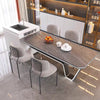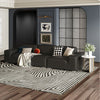7 Effective Methods to Remove Formaldehyde from Your Home in Malaysia

| Table of Contents |
|---|
Formaldehyde is a colourless, pungent gas that’s often found in household materials like glue, paint, and compressed wood, especially in new furniture or renovation materials. In Malaysia’s hot and humid climate, removing formaldehyde effectively requires special attention. Here are 7 practical tips to help you do just that.

I: Choose Low-Formaldehyde or Eco-Friendly Furniture
Tip 1: Always check the labels on furniture for low-formaldehyde or eco-friendly certifications. In Malaysia, you can find brands with certifications like GREENGUARD or FloorScore.
- If you’re buying new items like a desk or cabinet, opt for solid wood or furniture made with E0 or E1 grade panels. They not only reduce formaldehyde release but are also more durable.
- Many local furniture brands are now offering eco-friendly options, and you can often grab them at a discount during sales—good for your wallet and your health!

II: Proper Ventilation is Key
Tip 2: Ensure you open windows for at least 2 hours daily, especially during cooler parts of the day like early morning or evening. Avoid opening windows in humid weather to prevent excess moisture build-up.
- If your home has just been renovated, try to open windows every morning and evening to let fresh air circulate. Use fans or exhaust fans to help remove formaldehyde faster—especially important if you have young children or sensitive family members.
- For those living in apartments with poor ventilation, consider installing a mechanical ventilation system to consistently replace the polluted indoor air.

III: Use Air Purifiers with Activated Carbon Filters
Tip 3: Air purifiers with activated carbon filters are more effective than regular HEPA filters, as the carbon can absorb harmful gases like formaldehyde.
- If you have babies or elderly family members, place an activated carbon purifier in their room and let it run 24/7 to ensure they breathe cleaner air. This is especially useful after getting new curtains or furniture.
- If you suffer from allergies, choose purifiers with photocatalytic oxidation technology, which breaks down formaldehyde and other harmful substances using UV light.

IV: Clean Fabric Furniture Regularly
Tip 4: Fabric furniture tends to absorb formaldehyde, so regular cleaning can reduce its release, especially with sofas and curtains.
- If you have pets, vacuum your sofa weekly to remove dust and formaldehyde particles. You can also use a steam cleaner monthly to deep-clean and disinfect your sofa, which will help eliminate formaldehyde and pet hair.
- Curtains, often a hotspot for formaldehyde, should be deep cleaned every 3 months. If they’re brand new, use a cleaning solution that specifically targets formaldehyde.

V: Use Plants to Naturally Purify Air
Tip 5: Place natural air-purifying plants like English Ivy or Spider Plants around your home to absorb formaldehyde.
- In your living room, a Monstera or Spider Plant can both beautify the space and help absorb formaldehyde. Snake Plants and Aloe Vera are also great for smaller spaces like bedroom windowsills or desks. They’re low-maintenance and help clean the air.
- Create a “green corner” by grouping various plants together. Not only will this help remove toxins, but it’ll also make your space more relaxing.

VI: Seal Furniture Surfaces
Tip 6: Use eco-friendly paints or formaldehyde sealants to coat your furniture and seal in formaldehyde emissions.
- For a new wooden dining table, apply a layer of low-VOC eco-friendly paint before use to seal the formaldehyde inside. Let the furniture air out on the balcony for a few days until fully dry before bringing it indoors.
- If you already have old wooden furniture, you can hire professionals to give it a thorough sealing treatment, reducing formaldehyde emissions and extending its lifespan.

VII: Control Humidity and Regularly Test Air Quality
Tip 7: Formaldehyde evaporates faster in hot, humid environments, so keeping indoor humidity in check is essential. Use dehumidifiers, especially during the rainy season.
- In Malaysia’s monsoon season, when humidity is high, turn on a dehumidifier to keep humidity below 50%. This helps to slow down formaldehyde emissions, especially in freshly renovated rooms or newly furnished spaces.
- Invest in a portable formaldehyde detector to regularly test your home’s formaldehyde levels. If levels are too high, take immediate action by improving ventilation or using an air purifier.
By following these simple tips, you can effectively reduce the impact of formaldehyde in your home, creating a healthier and safer environment. Whether it’s choosing eco-friendly furniture, ensuring good ventilation, or adding some greenery, each step can make a significant difference in improving your indoor air quality.

Conclusion:
These 7 steps will help you identify and address formaldehyde issues in your home. With proper ventilation, the right tools, and a few lifestyle adjustments, you’ll be on your way to creating a fresher, healthier living space. Though Malaysia’s climate can accelerate formaldehyde release, the right measures will ensure it doesn’t become a long-term problem for your household.
FAQs
1. How to remove formaldehyde from a new house?
To remove formaldehyde from a new house, increase ventilation by opening windows and doors, and use mechanical ventilation systems or air purifiers with activated carbon filters. You can also place indoor plants known to absorb formaldehyde, such as spider plants or aloe vera. Additionally, opt for formaldehyde-reducing products like specific paints and coatings designed for this purpose. Let your house "air out" for several weeks before fully moving in to minimize exposure.
2. How to remove formaldehyde from fabric?
To remove formaldehyde from fabric, wash your new clothes, curtains, or upholstery with hot water and mild detergent. Air drying these items in sunlight can also help as UV rays can break down formaldehyde. For persistent odors, using baking soda during washing or adding vinegar to the rinse cycle may further neutralize any remaining formaldehyde.
3. Do HEPA filters remove formaldehyde?
No, HEPA filters are effective in removing particles like dust and pollen, but they do not remove gases like formaldehyde. To filter formaldehyde, you need air purifiers equipped with activated carbon filters, which are specifically designed to adsorb volatile organic compounds (VOCs), including formaldehyde.
4. How to remove formaldehyde?
To effectively remove formaldehyde, improve air circulation with mechanical ventilation or by opening windows. Activated carbon air purifiers and dehumidifiers can help reduce formaldehyde levels, especially in humid climates. Use low-formaldehyde or eco-friendly building materials, and consider professional formaldehyde removal services if levels are particularly high.
5. How to remove formaldehyde from furniture?
To remove formaldehyde from furniture, place the furniture in a well-ventilated area and use air purifiers with activated carbon filters. Wiping surfaces with a damp cloth and using formaldehyde-reducing sprays can also help. Over time, formaldehyde will off-gas naturally, but using these methods can accelerate the process. Avoid placing new furniture in poorly ventilated rooms.





